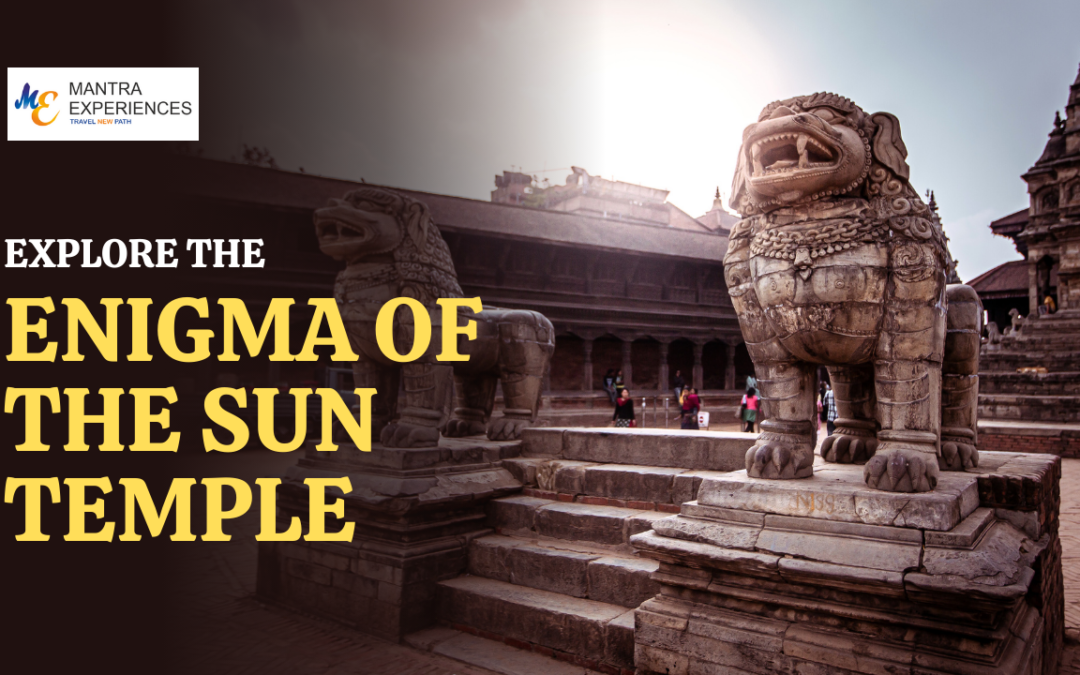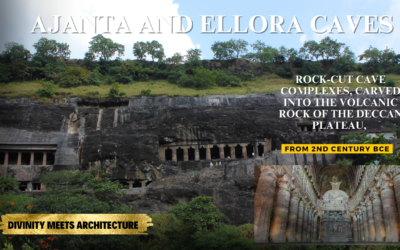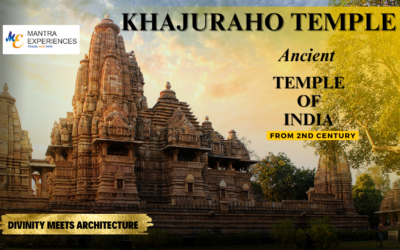Konark Sun Temple The Magnificence of Odisha’s Iconic Gem
Nestled in the heart of Odisha, the Konark Sun Temple is an iconic masterpiece of Indian temple architecture. Constructed in the 13th century by King Narasimhadeva to pay homage to the Sun God, Surya, this temple holds secrets and surprises that go beyond its stunning facade.
The Konark Sun Temple, a UNESCO World Heritage Site, is a marvel of ancient Indian architecture and a testament to the rich cultural heritage of Odisha, India. This stunning temple is not just a place of worship but also an architectural wonder that draws history enthusiasts, art aficionados, and curious travelers from all over the world. Join us on this virtual journey as we delve into the structural facts, historical significance, and uncover captivating wonders hidden within the architectural marvel of this extraordinary temple.
Structural Facts
The chariot’s design bore a striking resemblance to the celestial vehicle of Lord Surya
The Konark Sun Temple, a 13th-century architectural masterpiece, mirrors the chariot of God Surya. In Hindu mythology, Surya’s chariot, pulled by 7 horses and adorned with 24 wheels, inspired its construction. Carved from Khondalite stone, remnants of the horses remain within the temple’s walls, diligently preserved by the Archaeological Survey of India. Your bags packed, a stay in an hourly hotel in Puri or Bhubaneswar beckons.
The Significance of the Chariot’s Elements
7 Horses: Symbolizing the rainbow’s colors or days of the week.
24 Wheels: Depicting the 12 months and the lunar phases in Hindu calendars.
8 Spokes: Functioning as sundials, marking the Indian day’s eight pahars, each three hours long. Shadows on the wheels guided timekeepers.
Architectural Marvel: Aligning with the Sun Constructed in the northwest corner of Puri to honor God Surya, Konark’s architecture ensures the first sunrays embrace the idol within the Prarthana Mandir. These rays were believed to mimic a diamond within the idol’s core.
Ingenious Stone Transportation Stones were ferried on wooden rafts from Khandagiri and Udaygiri, located 62 kilometers from Puri, via the Chandrabhaga River. A fascinating feat of logistics, indeed!
Magnetic Marvel or Mystery? Magnetism played a role in the temple’s construction. Initially placed atop the pagoda, it suspended the Sun god idol through iron rivets. Sadly, the magnet has been removed, sparking various theories about its disappearance.
Guarded Secrets: The Closed Main Door Due to structural vulnerabilities following the magnet’s removal, the main door of the Prarthana Mandir was sealed for security reasons. A mystique shrouds this decision, adding to the temple’s allure.
Guiding Seafarers with Black Pagoda Konark’s black granite structure served as a prominent shore marker for distant ships, explaining its nickname, the “black pagoda.”
Moral Lessons in Stone Carved lion and elephant sculptures at the entrance symbolize human greed and ego, their weight crushing the human form. These timeless moral lessons resonate even today.
A Journey Worth Undertaking With the Prarthana Mandir’s main door closed, explore the outer temple and the open-air Natya temple (Nrityashala). Here, marvel at 128 dance styles depicted in 758 sculptures. An enticing visit to the Konark Sun Temple awaits your discovery. Plan your trip, and ensure a flexible stay by booking an hourly hotel in Puri or a hotel for a few hours in Bhubaneswar through MiStay.
Historical Facts
Rich Heritage Konark Sun Temple is an embodiment of Odisha’s rich cultural heritage and architectural prowess during the medieval period.
Decline and Restoration Over the centuries, the temple fell into disrepair and was buried under sand dunes. It was rediscovered and partially restored by the British in the 19th century. Today, it stands as a partially preserved monument, with some parts lost to time.
UNESCO World Heritage In 1984, the Konark Sun Temple was designated as a UNESCO World Heritage Site, recognizing its cultural and historical significance on a global scale.
Significance
Spiritual Center The temple is dedicated to the Hindu sun god, Surya, and was once a place of worship and pilgrimage.
Architectural Legacy It serves as a testament to the architectural brilliance of ancient India and continues to inspire architects and artists worldwide.
Tourism Attraction Konark Sun Temple is a major tourist attraction in India, drawing visitors with its historical, architectural, and artistic allure.
Location
The Konark Sun Temple is situated on the eastern coast of India in the state of Odisha, approximately 35 kilometers north of Puri and 65 kilometers from Bhubaneswar.
Weather Conditions
Summer – The summer months (March to June) can be quite hot and humid, with temperatures often exceeding 35°C (95°F). It’s advisable to carry sunscreen and stay hydrated if you visit during this time.
Monsoon – The monsoon season (July to September) brings heavy rainfall to the region, making it a less favorable time for a visit due to the wet and muddy conditions.
Winter – The best time to visit Konark is during the winter months (October to February). The weather is pleasant, with temperatures ranging from 15°C to 25°C (59°F to 77°F), making it ideal for exploring the temple and the surrounding area.
Suitable Time to Visit
To fully enjoy your visit to the Konark Sun Temple, plan your trip during the winter months, ideally between October and February.
How to Reach
By Air – The nearest airport to Konark is Bhubaneswar’s Biju Patnaik International Airport, which is well-connected to major cities in India. From the airport, you can hire a taxi or take a bus to reach Konark.
By Train – The nearest railway station is Puri Railway Station, which is connected to major cities in India. From Puri, you can hire a taxi or take a bus to reach Konark, which is approximately 35 kilometers away.
By Road – Konark is well-connected by road to various cities in Odisha. You can hire a taxi or take a bus from Bhubaneswar, Puri, or other nearby towns to reach the temple.
Final Thoughts Prepare for a captivating journey to the Konark temple in Puri. While the main Prarthana Mandir remains closed for safety, the temple’s outer areas and the mesmerizing Natya temple beckon, promising to unveil the temple’s splendid history and artistry. When will you embark on your adventure to the spectacular Konark Sun Temple?
Things to Do
Explore the Main Temple Wander through the temple complex to admire the breathtaking architecture and detailed carvings.
Konark Dance Festival If visiting in December, don’t miss the Konark Dance Festival, featuring classical dance performances against the backdrop of the temple.
Visit Konark Beach Enjoy a relaxing stroll on the nearby Konark Beach and witness beautiful sunsets.
Food and Dining Sample authentic Odia cuisine in nearby Puri, which includes delicious dishes like Dalma, Pakhala, and the famous Puri Jagannath Temple’s prasadam.
Travel Tips
Temple Timings The Konark Sun Temple is typically open to visitors from sunrise to sunset. Be sure to check the specific opening and closing times, as they may vary seasonally.
Footwear Remove your shoes before entering the temple complex as a sign of respect. You can carry socks or wear comfortable footwear that is easy to remove and put back on.
Photography Photography is allowed in most areas of the temple, but be respectful of signs and guidelines. Some sections may prohibit photography to preserve delicate carvings.
Tour Guides Consider hiring a local tour guide to gain deeper insights into the history, architecture, and stories behind the temple’s carvings. Guides can enhance your experience and provide valuable information.
Sun Protection: Odisha can get quite hot, especially during the summer months. Wear sunscreen, sunglasses, and a hat to protect yourself from the sun’s harsh rays while exploring the temple complex.
Stay Hydrated: Carry a reusable water bottle and stay hydrated, particularly if you plan to spend a lot of time exploring the temple and its surroundings.
Respect Local Customs: When interacting with locals or participating in any rituals or ceremonies, be respectful of local customs and traditions. It’s a chance to learn and appreciate the culture.
Entry Fees: Be prepared to pay an entry fee, which may vary for domestic and international visitors. Check the current fees and any discounts available.
Local Cuisine: Don’t miss the opportunity to savor authentic Odia cuisine in nearby restaurants. Try local specialties like seafood dishes and traditional sweets.
Communication: While in Odisha, it can be helpful to have a few basic phrases in Odia or Hindi to facilitate communication with locals. English is also widely understood in tourist areas.
Safety: Keep your belongings secure and be mindful of your surroundings, especially in crowded places. It’s advisable to have a money belt or a secure bag to protect your valuables.
Weather Considerations: Check the weather forecast before your visit and dress accordingly. During the monsoon season (June to September), it’s a good idea to carry an umbrella or raincoat.
Local Markets: Explore the local markets in Konark and Puri to shop for souvenirs, handicrafts, and traditional clothing. Bargaining is common in these markets, so be prepared to negotiate prices.
Travel Insurance: Consider purchasing travel insurance that covers medical emergencies and trip cancellations. It’s a good precaution for any unexpected situations during your journey.
Plan Ahead: Plan your visit to the Konark Sun Temple well in advance, especially if you intend to visit during peak tourist seasons. Booking accommodations and transportation ahead of time can save you hassle.
Local Festivals: Check if there are any local festivals or events happening in Konark during your visit. Attending a festival can provide a unique cultural experience.
Itinerary Suggestions
Here are some itinerary suggestions for your visit to Konark:
Ajanta and Ellora Caves
Ajanta and Ellora Caves: India's Ancient Artistic Treasures Tucked away in the heart of Maharashtra, India, the Ajanta and Ellora Caves are not mere geological formations; they are portals to India's rich cultural heritage and spiritual depth. Carved into the rocky...
Khajuraho Temple
Exploring the Magnificent Khajuraho Temple : A Journey Through Time Nestled in the heart of Madhya Pradesh, the Khajuraho Temples are iconic masterpieces of Indian temple architecture. Constructed between the 9th and 11th centuries, these temples hold secrets and...



